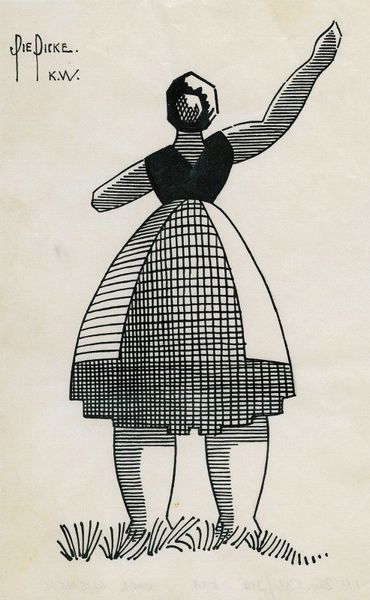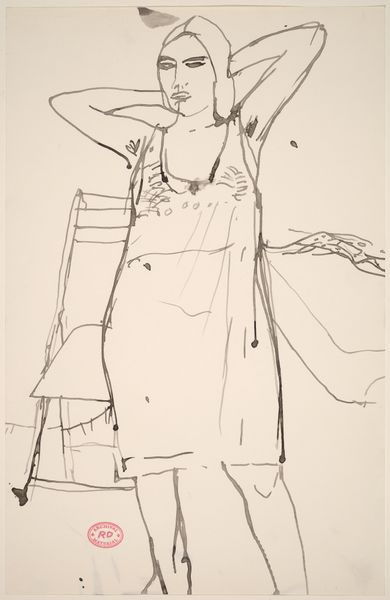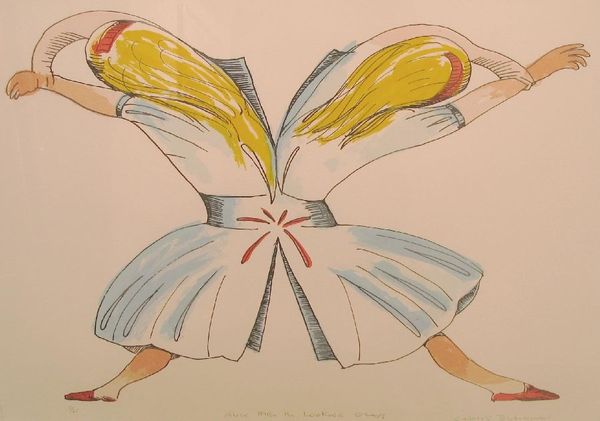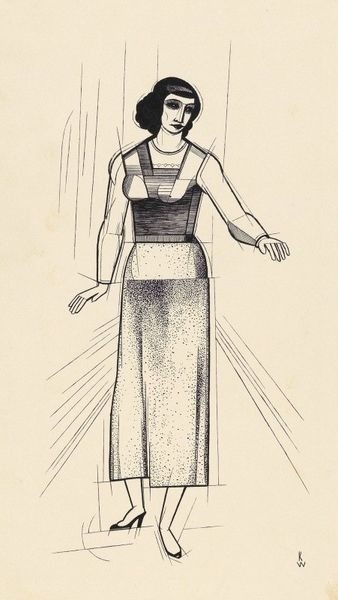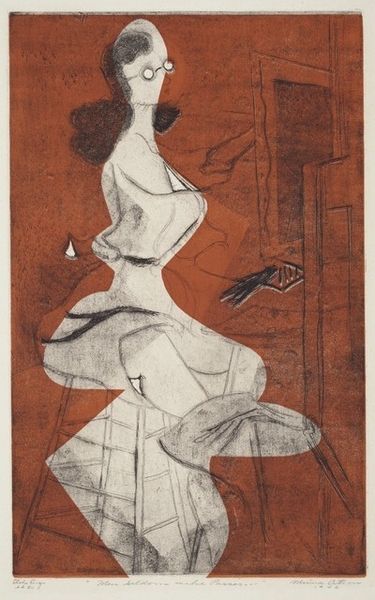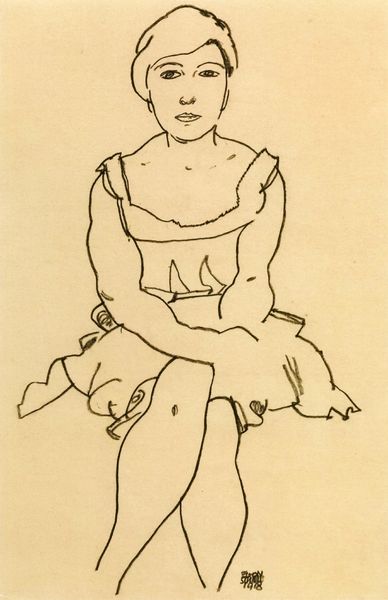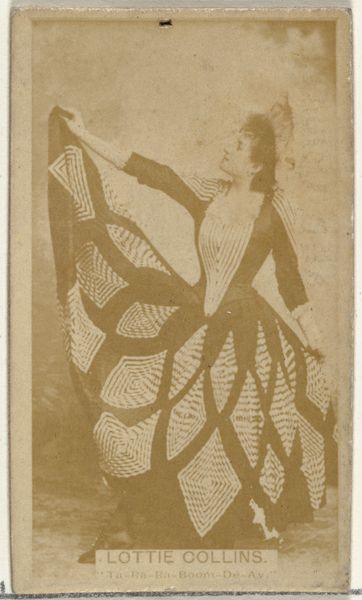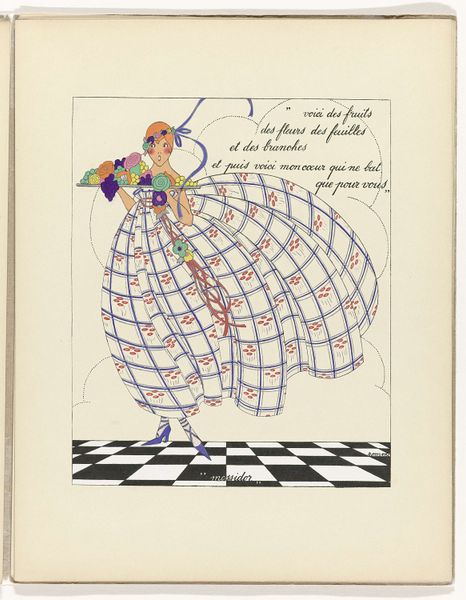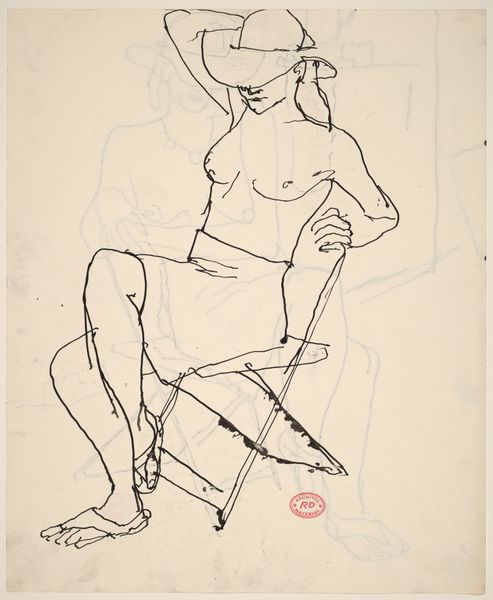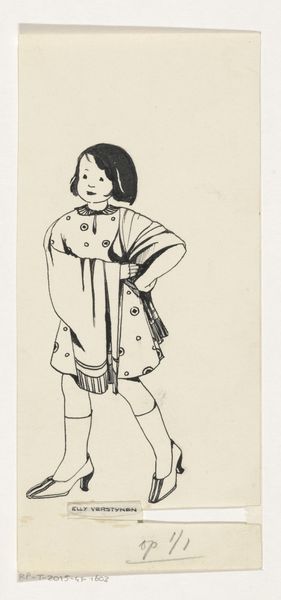
drawing, mixed-media, collage, photography
#
portrait
#
art-deco
#
drawing
#
mixed-media
#
collage
#
figuration
#
photography
Copyright: Public Domain: Artvee
Curator: Karl Wiener created "Tänzerin," or "Dancer," in 1941. It's a mixed-media piece, incorporating drawing, collage, and photography. My first impression is the image evokes a fragmented feeling, almost a sense of unease despite its subject matter. Editor: The unsettling feeling, I think, comes from the artist's material choices and methods. He positions a rather generic photographic portrait above this explosion of drawn and collaged lines and shapes. What reads as a traditional theme is complicated by the materials, labor, and consumption tied to their production, juxtaposing "high" and "low" art forms. Curator: Indeed. Note how the geometric shapes contrast the soft realism of the woman’s face. It's almost as if the artist has deconstructed the concept of a dancer, taking her apart and reassembling her with different visual languages. What could these broken, jagged shapes suggest about dance or, more broadly, about performance at the time it was made? Editor: I see what you mean. This construction-destruction dynamic echoes anxieties simmering in 1941 Europe. I am reminded of Cubism and its shattered perspectives. The black shards protruding downwards could suggest not a light skirt, but impending doom. This dancer then may represent cultural continuity as well as impending fragmentation. Curator: Yes! Dance as both celebration and lament. The combination of the dancer’s smiling face, collaged onto a drawing and watercolor background, and the use of photography itself points to larger questions of image reproduction and the construction of identity. In that era, we were on the cusp of an immense change to production, accessibility, and what those shifts meant for art making. Editor: Looking closely, one also notices how labor is masked. The delicate linework alongside mass-produced photographic materials obscure the touch of the hand that mediates their assembly. Consider, for instance, that photographic portraits were becoming increasingly common for those of different social and economic standing—this detail offers some egalitarian promise while obscuring those who benefitted financially. Curator: That's a valuable point, shifting the focus from what we immediately "see" to how this was actually made, distributed, and understood during its time. Editor: Precisely. Examining these details unveils the broader story of the art's consumption and social life—it challenges what we value. It encourages viewers to reconsider ingrained cultural assumptions that separate crafts from supposed higher artistic accomplishments. Curator: Thank you, I agree completely! Reflecting upon your analysis inspires me to delve deeper into art making beyond aesthetic interpretation. There's a deeper story in there waiting to be told by looking closely at these choices!
Comments
No comments
Be the first to comment and join the conversation on the ultimate creative platform.
